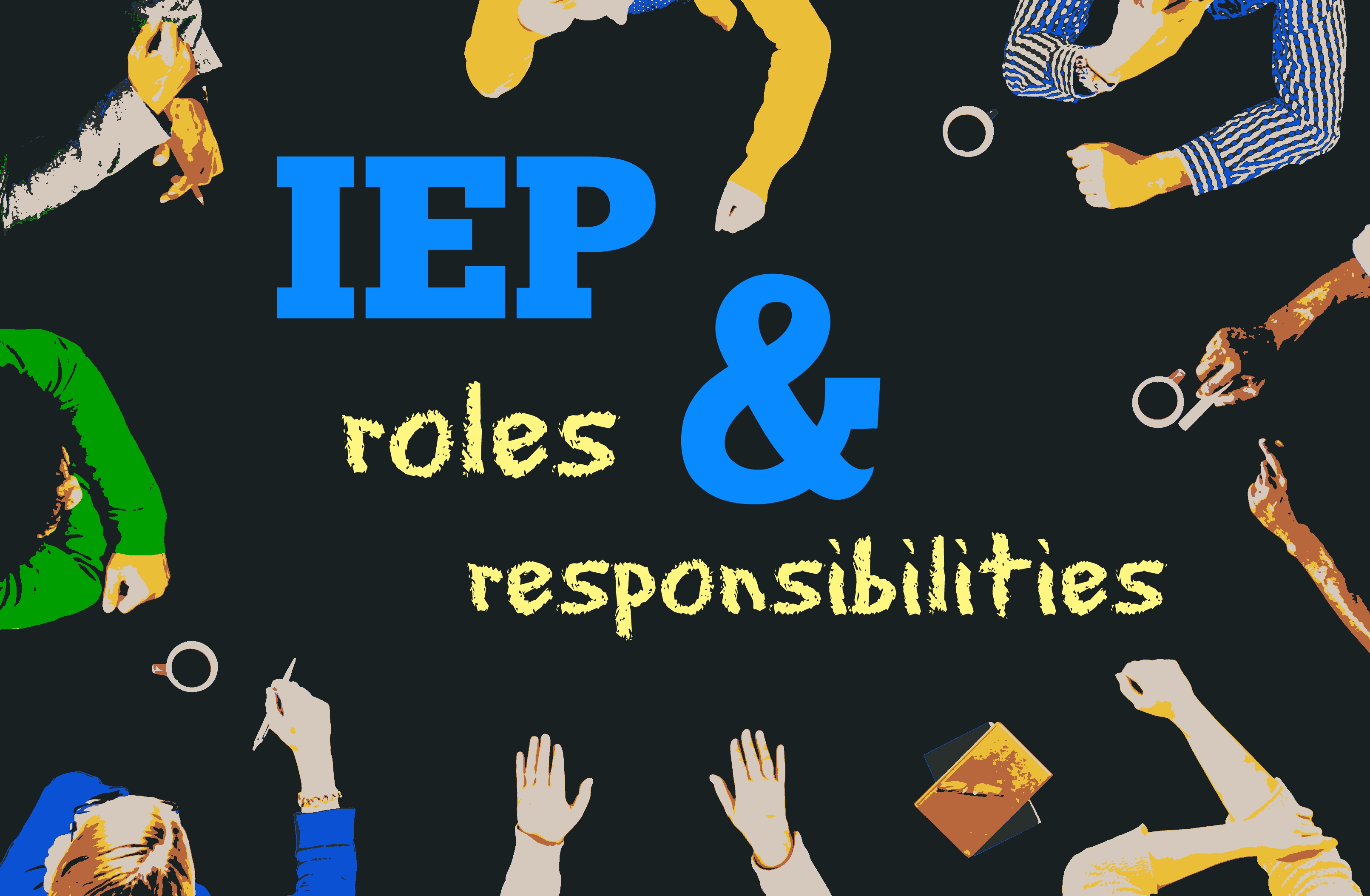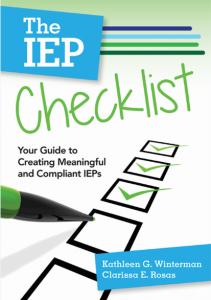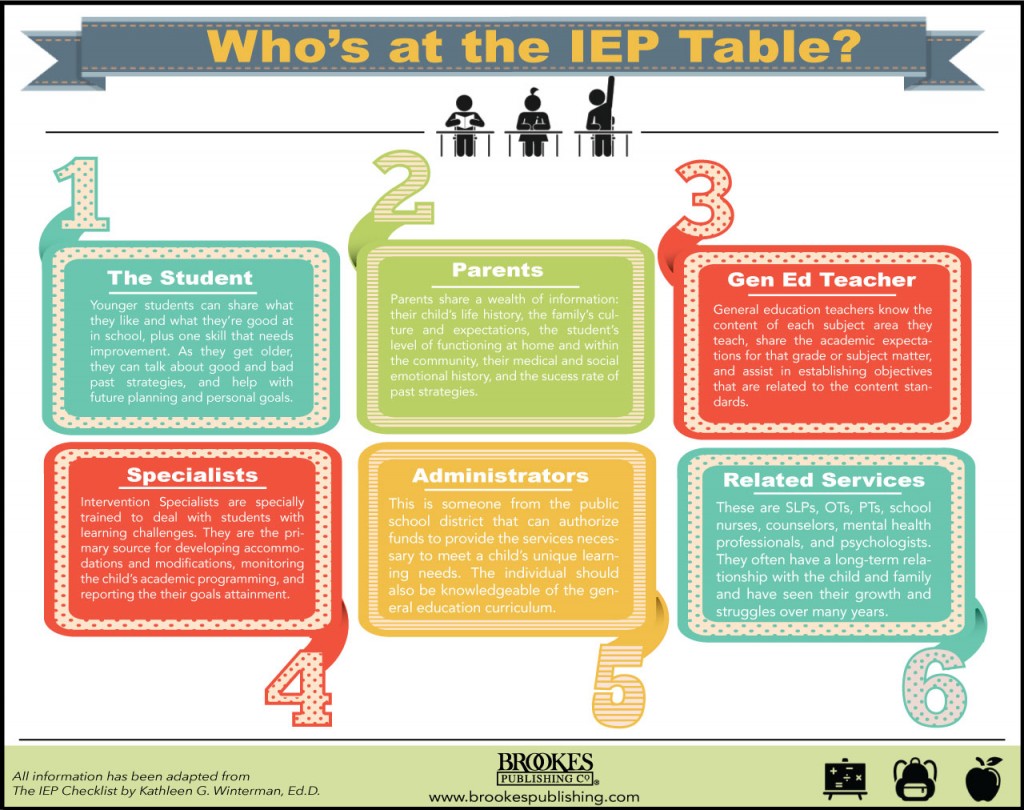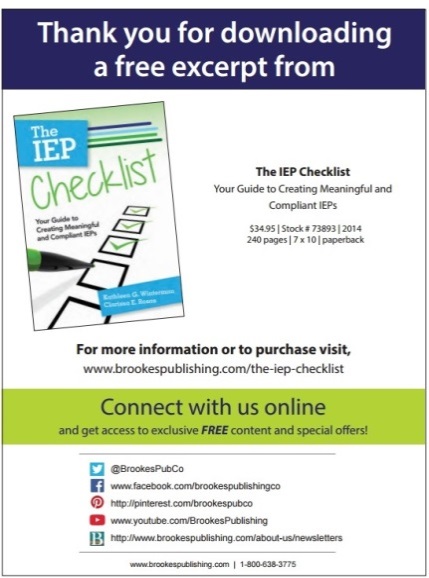Who’s at the IEP Table? A Quick Guide to Roles and Responsibilities
November 5, 2015
One of our goals here at the Inclusion Lab is to demystify the IEP process and give you practical ideas for working as a team on a student’s education plan. I’ll be bringing you posts on many different aspects of IEP development: deciding on goals, resolving conflict in meetings, empowering students to take a lead role, and much more. But today let’s start with a fundamental question:
Who should be at your IEP table, and what roles should everyone play?
 Great IEPs are the shared vision of your whole team—an effective education plan weaves together multiple perspectives, roles, and insights. In their book The IEP Checklist, Kathleen Winterman and Clarissa Rosas emphasize how important collaboration is and discuss 6 key roles that should be represented at your IEP table. I’ll outline them here so you can see how your IEP attendee list stacks up (and at the end, you’ll get a free book excerpt with even more information).
Great IEPs are the shared vision of your whole team—an effective education plan weaves together multiple perspectives, roles, and insights. In their book The IEP Checklist, Kathleen Winterman and Clarissa Rosas emphasize how important collaboration is and discuss 6 key roles that should be represented at your IEP table. I’ll outline them here so you can see how your IEP attendee list stacks up (and at the end, you’ll get a free book excerpt with even more information).
#1: The Student
Students should have an active role in developing their IEPs. No matter how young students are, they can contribute vital information about what motivates and interests them and what their hopes and goals are.
Roles:
Very young students (preK through Grade 1) can share basic information with the team, such as what they like, what they’re good at in school, and what skill they would most like to improve.
Older students should use the IEP meeting to:
- lead discussions on strategies that have been most successful
- talk about which strategies have been less successful, and why
- share first-hand perspective on their progress toward current goals and objectives
- help the team plan other ways to support development of new skills they need to meet their goals
#2: Parents or Guardians
No one knows a child better than his or her parent or guardian. They bring unique, in-depth knowledge to the table and should be welcomed to every IEP meeting as equal members of the team. (Team members in charge of scheduling IEP meetings should try to accommodate the family’s schedule as much as possible so a parent or guardian can attend.)
Roles:
Parents provide invaluable insights that help drive the IEP goal development process. If you’re a parent or guardian, use your seat at the IEP table to:
- share helpful information about your family’s culture and expectations
- give the team beyond-the-classroom insights on what your child is like at home and in the community
- talk about your child’s hopes, dreams, and interests
- share what’s worked and not worked with your child in the past
- bring up relevant details from your child’s life history, including his or her medical and social-emotional history
- advocate for creative thinking about how to meet your child’s learning needs in the least restrictive environment
#3: General Education Teachers
Gone are the days when special education teachers assumed sole responsibility for IEP development—now that more schools are including kids with disabilities and supporting their participation in the general curriculum, IEPs have evolved. General educators are now equally responsible for the learning of all kids, and they’re required to participate in IEP meetings. And it’s a good thing, considering the vital knowledge they bring to the table.
Roles:
If you’re a general ed teacher, your in-depth knowledge of the content areas you teach will be a huge help in the IEP meeting, especially when the team is developing goals that give students the best chance for academic success. At IEP meetings, you should:
- clarify the academic expectations for the grade or subject you teach
- help the team establish goals and objectives aligned with content standards for all students
- talk about the student’s progress and participation in the general curriculum
#4: Intervention Specialists or Special Education Teachers
It’s not an IEP meeting without the educators specially trained to work with learners who have special needs. Along with their deep familiarity with the student’s specific needs and challenges, they bring their knowledge of educational laws and the latest diverse learning strategies.
Roles:
If you’re an intervention specialist or special ed teacher, you’ll be the main source of knowledge for:
- developing accommodations and modifications
- monitoring the child’s academic programming to see what works and doesn’t work
- reporting the student’s attainment of and progress toward goals
#5: Administrator
Here, administrator is really a catch-all term for the person from the school district who can authorize funds to provide the services a student needs. This responsibility can be assigned to many different professionals, including principals, directors of special services, assistant principals, and school psychologists or counselors.
Roles:
If you’re acting as an administrator at an IEP meeting, you should be able to:
- design or supervise services for the student
- interpret testing data to help determine what the student needs
- allocate funds for services that will best support the student’s learning
- demonstrate knowledge of the general education curriculum
#6: Related Services Personnel
Services personnel don’t have to attend IEP meetings, but since they’ve often worked with the student and family for many years, they have valuable information and insights no one else can provide. Save a seat at the table for any professional who can help shape the student’s goals—including speech-language pathologists, occupational therapists, physical therapists, school psychologists and counselors, school nurses, and any private service providers who work with the family.
Roles:
If you’re a service provider, come to the IEP meeting ready to:
- offer your unique perspective on the child’s skills and progress
- share what you’ve learned from observing the child at home and in the outside community
- contribute to development of IEP goals and objectives, if the services you provide are directly related to the goals.
***
Like this post? Here are the key takeaways in infographic form, ready to share with your fellow inclusive educators:
Keep reading now–grab this free chapter from The IEP Checklist to learn more about successful teamwork during IEP meetings. There’s even a great activity you can try with your team to help your collaborative planning process!






Write a Comment
Your email address will not be published. Required fields are marked *
Post a Comment